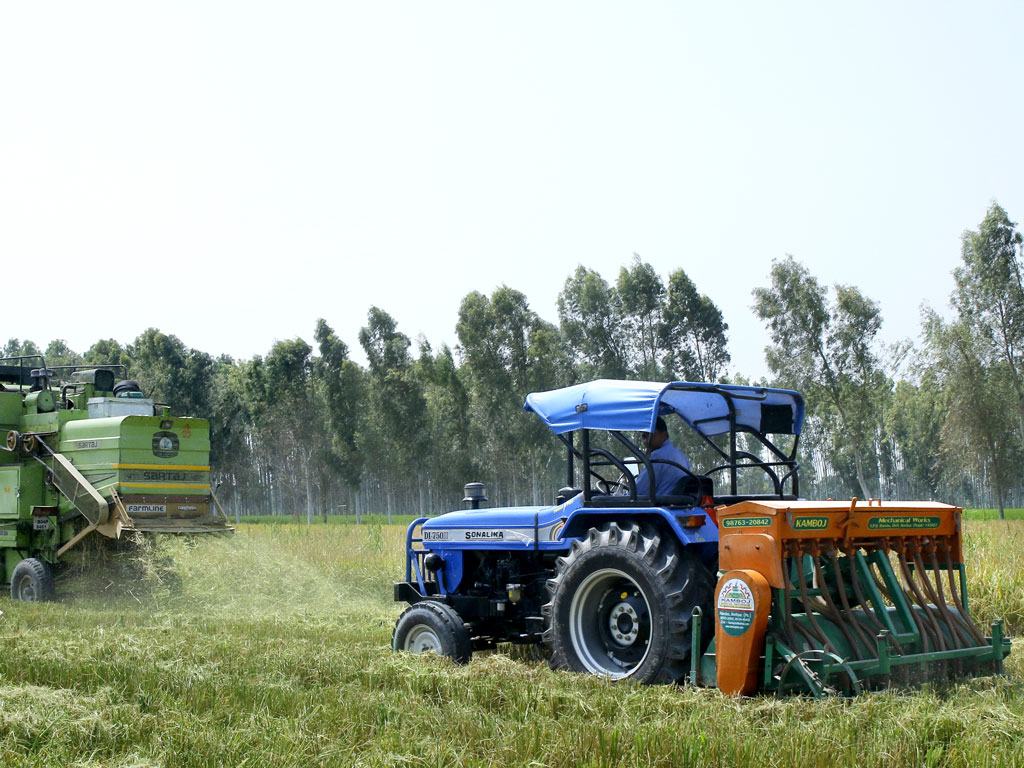For decades, rice stubble has been burned in India to clear fields and prepare for wheat sowing. The easiest way of getting rid of rice crop residue is to burn it in bulk, but this poses a serious threat to the entire biosystem, from soil nutrition to human health. Deteriorating soil health results in lower crop yields, increased dependence on fertilizers, and increased water volume requirements for irrigation, all of which have negative impacts on farmer incomes.
“Earlier when rice harvesting was manual, crop residues were taken out from fields and farmers benefited from selling them,” explains M.L. Jat, principal scientist and systems agronomist at CIMMYT. “Later, when agriculture included more mechanical operations for harvesting with the increase in the production to the tune of millions of tons, crop residue became a hazard in terms of disposal that would involve huge money, labor, and logistics.”


